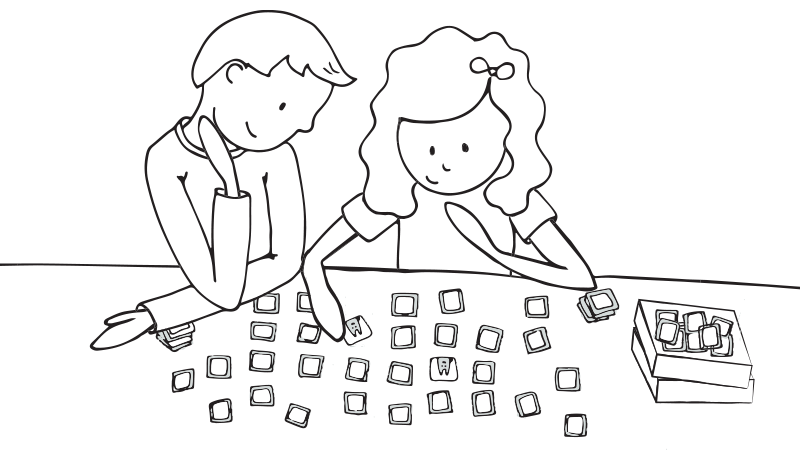Short description of the topic
The purpose of this activity is to plan and create a social game, in our case the Memory which can become a beloved social activity in kindergarten.
Learning outcomes
-
Competencies
- Digital and media competence: photography
- Cognitive competence: improving memory
- Social competences: following rules, accepting defeat/win as a part of the game.
-
Target group
3 years and up- Whole class
Individual work
- Whole class
-
Required materials
- Camera/phone/tablet
- Photographs
- Glue
- 10 printed photographs
- cardboard paper
- (laminator)

Download
(.pdf 207.86 KB)
Description of the activity (step by step)
Preparation:
Suggest children to create their very own social game – the Memory. Explain the steps needed to create your Memory cards: taking pictures, selecting pictures, crafting memory cards, and playing. You can let children photograph freely or you can come up with a topic together: toys, stones, things we meet on a walk, etc. Invite children to photograph! They can take photos in the playroom, outside, on a walk, etc.
Implementation:
Download the photographs to the computer and look at the pictures together with the children. Let them select the photos for the game. Then, copy all selected photos to a word document and decide on size (e.g. 5 cm x 7 cm works well). Print the document out in two versions. Next, children glue the pictures on a cardboard paper that you have cut into appropriate pieces beforehand. If you would like to use the games more often, laminate the cards before you start playing. Explain the rules of the game and play! When the game is finished, the children count the pairs or compare their stack of cards. The person who has the highest number of pairs is the winner.
Reflection:
Children share their experience with the game and its creation. Which part did they like best? Could we make it easier or more difficult (e.g. by adjusting the number of pairs or maybe you come up with other ideas together)? How did they feel during the game and at the end of the game (winning or losing)? Store the game and let the children play when they like. You can strengthen their memory by sometimes asking them about the creation of the photos: Do you remember when you shot this photo? Where was it? Etc.
Variations and additional ideas
The game can be upgraded:
When children look for the pairs, they can name the objects in their mother tongue or another language. They can also name the places where they found the items in the photos.
Children can make a memory game using opposites (empty glass/full glass).
Children can create other social games with the help of photography. Their photos represent obstacles/prizes/tasks on the path from the start to the finish line of the particular game.
Background information and didactical perspective
Children love to play social games. They gather their first experience by playing with adults. Later, they play social games with their peers. Social games are extremely valuable for gaining skills in many different areas of development.
Experience from kindergartens:
In our kindergarten, this memory game was chosen by the kids as an afternoon activity every day for some time. They loved to comment on who made the photo and where it was made.


